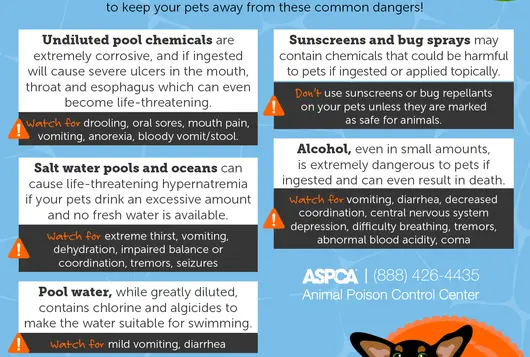The Most Common Sleep Aid Toxicities in Cats and Dogs

Contact the ASPCA Animal Poison Control Center at 1-888-426-4435 for assistance with suspected sleep aid toxicities.
Obtaining a good night of sleep is a common issue for humans, and many different medications and supplements are available to help promote a restful night of sleep. But given the popularity of these medications and supplements, it’s possible for pets to have inadvertent exposures that require veterinary care. Some of them carry significant toxicity concerns for pets. Below, we’ve provided information on the most common.
Zolpidem/Zaleplon
Zolpidem (commonly referred to by the brand name, Ambien) and zaleplon (commonly referred to by the brand name, Sonata) are both non-benzodiazepine hypnotic agents indicated for the treatment of insomnia. Even small exposures in dogs and cats can cause rapid onset of sedation and ataxia, but larger exposures may lead to paradoxical excitation, cardiac changes (such as tachycardia and hypertension), hyperthermia, tremors, and vocalization.
Treatment is focused on supportive care and managing cardiac and neurologic signs, including fluid therapy, sedation for stimulatory symptoms, cyproheptadine for serotonin syndrome, and beta blockers for tachycardia. The prognosis for recovery is good with treatment, and no long-term effects are expected.
Melatonin
Melatonin is an intrinsic natural hormone that is commonly supplemented OTC for the treatment of insomnia and regulation of sleep patterns. Melatonin is also occasionally utilized in veterinary medicine for treatment of disorders involving alopecia, cognatic dysfunction, anxiety, and regulation of reproductive processes. Exposure to melatonin alone often causes vomiting, sedation, ataxia, and (rarely) paradoxical excitation/agitation. Severe signs are not expected, and pets frequently recover with confinement at home or supportive care in-clinic.
It is very important to note that many melatonin-containing sleep aids are often combination formulations with other ingredients of concern, such as 5-Hydroxytryptophan and xylitol. Large ingestions of melatonin gummy products can also cause significant gastrointestinal upset and electrolyte derangements from fluid shifting due to the gummy formulation itself.
Xylitol
Xylitol is a rapidly absorbed sugar alcohol that can be found in a multitude of sweetened products, including flavored “fast dissolve” and gummy formulation sleep aids. Xylitol exposure risks are dose dependent and can include hypoglycemia (which may be severe and with tremors or seizures), electrolyte derangements, hepatic necrosis, and secondary coagulopathies in dogs.
Treatment for canine xylitol exposures include frequent meals, dextrose supplementation, fluids, hepatoprotective agents, and management of coagulopathy. The prognosis depends on the amount of xylitol ingested and the response to treatment. Fortunately, risks for cats with exposure to xylitol are limited to gastrointestinal upset only. Cats do no experience hypoglycemia or liver effects.
5-Hydroxytryptophan
5-Hydroxytryptophan (5-HTP) is an amino acid that readily crosses the blood-brain barrier following absorption from the gastrointestinal tract. It can be found as a single-ingredient supplement or as part of formulations with multiple active ingredients (including xylitol). These supplements are marketed toward improvement of sleep, anxiety, appetite, and mood via 5-HTP’s action of serotonin receptors. Even small exposures in pets can cause severe and rapid onset of clinical signs due ot the overstimulation of serotonin receptors that are widely distributed throughout the body.
Symptoms of 5-HTP toxicity include lethargy, ataxia, weakness miosis or mydriasis, gastrointestinal upset, cardiac changes (such as hypertension and tachycardia), dyspnea, tremors, seizures, vocalization, agitation, and hyperthermia.
Treatment is aimed toward controlling signs of serotonin syndrome and maintaining normal vitals. The prognosis depends on the response to treatment. Death with 5-HTP exposures can occur as a sequela to hyperthermia and prolonged muscle activity from tremors and seizures (disseminated intravascular coagulopathy, rhabdomyolysis).
We have lots more on this subject:



